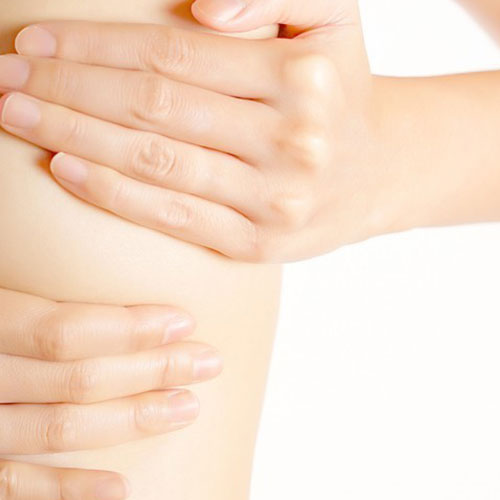Areola Restoration
Areola tattooing is a cosmetic procedure to restore or enhance the appearance of the areola, often after breast surgery. It helps individuals regain confidence and a sense of normality.
Cosmetic procedure to restore or enhance the appearance of the areola
Areola Restoration for Women: A Comprehensive Guide
Areola restoration is a specialised cosmetic tattooing procedure designed exclusively for women who have undergone breast surgery, such as mastectomies, breast reconstruction, or augmentations. This advanced technique recreates the natural appearance of the areola, offering both aesthetic improvement and emotional healing.

What is Areola Restoration?
Areola restoration is a form of micropigmentation or medical tattooing that uses 3D techniques to simulate the appearance of a natural nipple and areola. This procedure is particularly beneficial for women who have lost their areolas due to breast surgery. The goal is to achieve a symmetrical and realistic result that boosts the patient’s confidence and body image.
Who is an Ideal Candidate?
This procedure is ideal for women who have undergone:
- Mastectomy: Women who have had a breast removed due to cancer and have undergone breast reconstruction.
- Breast Reduction or Augmentation: Patients who experience asymmetry or scarring post-surgery.
- Congenital Conditions: Women born with conditions that affect the appearance of the areola.
The Procedure
The areola restoration process involves several steps:
- Consultation: This initial meeting is crucial for understanding the patient’s expectations and needs. During this session, the practitioner will discuss colour preferences, shape, and size.
- Colour Matching: A customised pigment is blended to match the patient’s natural skin tone. This step is vital for achieving a natural look.
- Tattooing: The procedure itself involves implanting pigment into the dermal layer of the skin using a specialised tattoo machine. The practitioner uses advanced techniques to create a 3D effect, simulating the texture and colour variations of a natural areola.
- Aftercare: Post-procedure care is essential for optimal healing and pigment retention. Patients are advised to avoid direct sunlight, swimming, and excessive sweating for at least two weeks.
Recovery and Results
The recovery period for areola restoration is relatively short. Patients may experience mild discomfort, redness, and swelling immediately after the procedure, but these symptoms usually subside within a few days. The final results are visible after the skin has fully healed, typically within four to six weeks.
Benefits of Areola Restoration
- Enhanced Self-Esteem: For many women, areola restoration is the final step in their breast reconstruction journey, helping them feel whole again.
- Natural Appearance: The use of 3D tattooing techniques ensures a lifelike result that mimics the depth and texture of a natural areola.
- Customisation: Each procedure is tailored to the individual, ensuring that the colour, size, and shape match the patient’s natural anatomy and preferences.
Choosing the Right Practitioner
Selecting a skilled and experienced practitioner is crucial for achieving the best results. Ensure that the practitioner is trained in medical tattooing and has a portfolio of successful outcomes. It is also important to choose a sterile and professional environment to minimise the risk of infection and complications.
Areola restoration is more than just a cosmetic procedure; it is a pathway to emotional and psychological healing for women who have undergone significant breast surgery. By restoring the natural appearance of the areola, this procedure helps women regain their confidence and feel complete again. If you are considering areola restoration, consult with a qualified practitioner to explore your options and achieve the best possible outcome.
FAQ
An areola restoration tattoo is a specialised form of cosmetic tattooing designed to recreate the appearance of a natural areola and nipple. This treatment is commonly used by individuals who have undergone breast surgery, such as mastectomies, or those who wish to enhance the size, shape, or symmetry of their areolas. The tattoo can provide a more realistic, 3D appearance, helping individuals feel more confident in their bodies.
- Natural Appearance: Restores the look of natural areolas and nipples, blending seamlessly with your skin tone.
- Boosts Confidence: Many clients report feeling more complete and confident following the procedure.
- Customisable: You can personalise the size, shape, and colour of the areola to suit your preferences and match your natural skin tone.
- Realistic Results: Using advanced shading techniques, the tattoo can create a 3D effect that mimics a natural nipple.
This procedure is ideal for:
- Breast cancer survivors who have undergone a mastectomy or breast reconstruction surgery.
- Individuals with areola size or shape irregularities.
- Those who have undergone gender-affirming surgery and wish to create natural-looking areolas.
- Anyone seeking to improve the appearance of faded, irregular, or pale areolas due to genetics or ageing.
The procedure begins with a consultation to discuss your desired outcome, including the size, shape, and colour of the areola. The technician will then carefully apply a numbing cream to ensure your comfort throughout the treatment. Using specialised techniques, the technician will create a 3D effect, tattooing pigment into the skin to replicate the look of a natural areola. The procedure typically lasts between 2 to 3 hours, depending on the complexity of the design.
Most clients experience minimal discomfort during the procedure.
After the treatment, you may feel slight tenderness in the area, but this should subside within a few days.
The results of an areola restoration tattoo can last several years, with touch-ups recommended every 2 to 3 years to maintain the colour and definition. Factors such as skin type, lifestyle, and exposure to sunlight can influence how long the pigment stays vibrant.
Immediately after the procedure, the tattooed area may appear slightly darker and more intense than expected. This is completely normal and will lighten over the healing period. You may also experience mild swelling or redness, which usually subsides within a few days. The full healing process takes about 6 to 8 weeks, after which the final results will be visible.
Proper aftercare is crucial to achieving the best results:
- Keep the area clean and dry during the healing process.
- Avoid submerging the area in water, including baths and swimming, for at least 10 days.
- Avoid sun exposure and wear loose clothing to prevent irritation.
- Do not apply any makeup or lotions to the treated area until fully healed.
- Follow the specific aftercare instructions provided by your technician.
The following individuals may not be suitable for areola restoration:
- Pregnant or breastfeeding women.
- Individuals with certain skin conditions such as psoriasis, eczema, or keloid scarring in the treatment area.
- Those undergoing chemotherapy or radiation treatment should wait until they have fully recovered before considering the procedure.
- People with autoimmune conditions or compromised immune systems may need medical clearance.
- Those with uncontrolled diabetes or other serious health conditions.
- Anyone on blood-thinning medication or with blood clotting disorders should consult with their doctor before undergoing the procedure.
- It’s important to have a detailed consultation with your technician to discuss any medical conditions or concerns before proceeding.
A touch-up is generally recommended 6 to 8 weeks after the initial procedure to perfect the design and colour. Over time, the pigment may fade, so additional touch-ups every few years can help maintain the look.
Most clients can return to their normal routine within a day or two, although you should avoid strenuous activities, including heavy exercise, for a few days to allow the area to heal properly. It’s also best to avoid swimming and direct sun exposure during the healing process.
